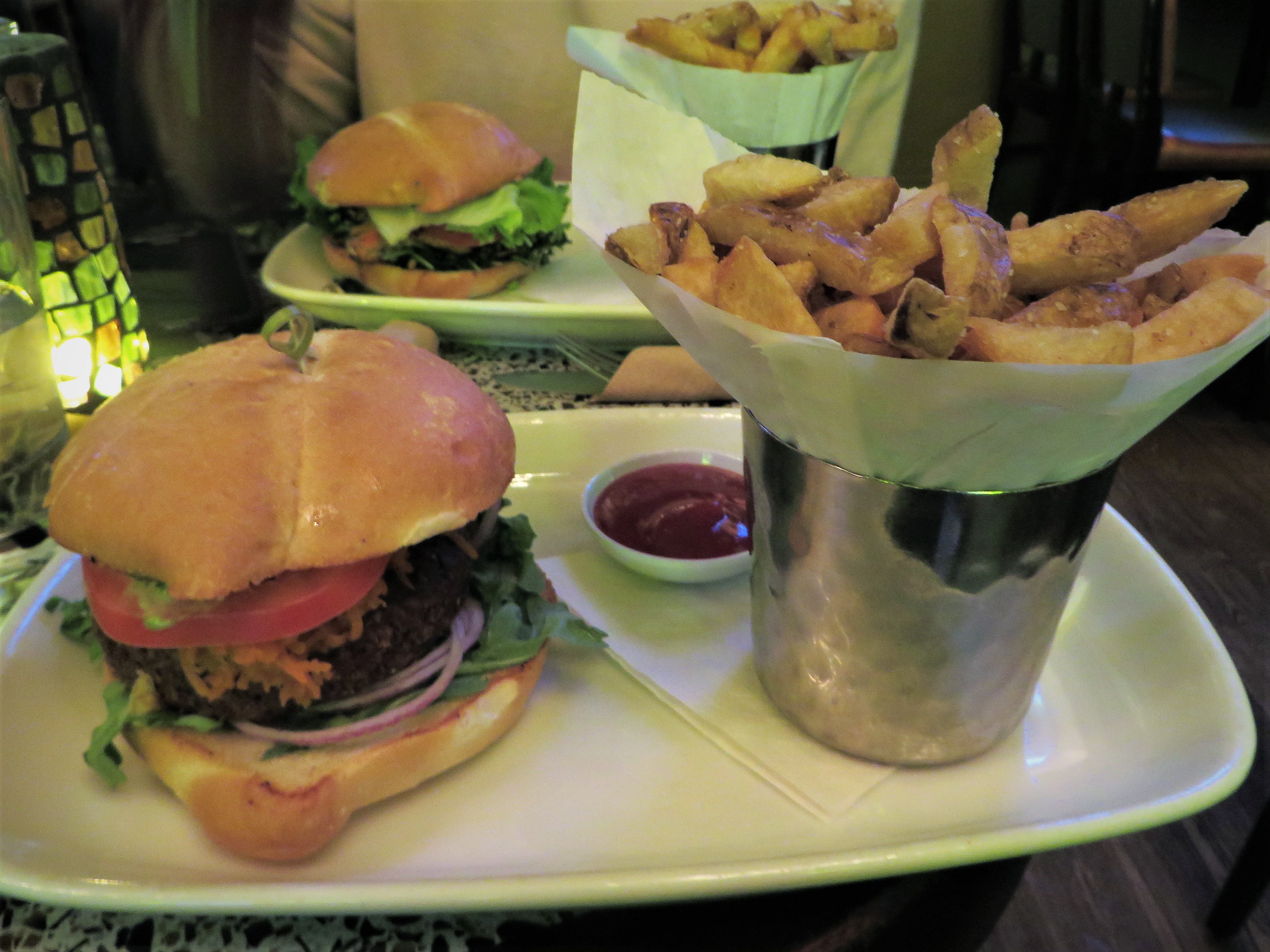The Commodification of Quinoa
Pictured above is a Quinoa veggie burger taken in February 2017, at Rogue Kitchen and Wetbar at Waterfront Station. In recent years, quinoa has become a popular ingredient in Western societies that come with many health benefits. However, the high demand of the commodity can have a significant negative impact on Bolivian farmers, from where quinoa is largely exported. As consumers, it is important to know where we get our products, who is involved in the process, and how people, land, and other factors are affected. The demand for quinoa had recently risen to the point at which it had affected Bolivia’s farmers and land negatively.
The consumption of quinoa has increased tripled between 2009 and 2013, whereas the price had tripled between 2008 and 2010 and increased twice as much again in 2013 (Romer 2015). This rise in demand may have contributed to Bolivia’s economy, but it also came with costs. The prices of quinoa had risen along with demand, therefore making it more expensive to buy quinoa, which is a staple food of Bolivian natives. Unable to buy quinoa resulted in the purchase of cheaper, more convenient unhealthy foods, affecting their health.
However, an article published in 2016 (as opposed to the news coverage mainly published in 2013 to 2015) opposed the effects of the rise in quinoa consumption and prices. A study by Marc Bellemare, Johanna Fajardo-Gonzalez and Seth Gitter had found that during the boom, Peru’s standard of living steadily rose but increased more for those who eat but do not grow quinoa. As for quinoa consumption, Peru as a whole decreased in its quinoa consumption but specifically in the city of Puno consumed a slight bit more (Cherfas 2016). The importance in this article, however, is that although some effects may be contested, there still is cause to worry. The focus on certain kinds of quinoa are decreasing the production of diverse variations of quinoa, which are essential to protect. The most significant issue, however are the environmental impacts. Quinoa was so popular that land eventually could not be left fallow to replenish nutrients, resulting in the loss of those nutrients and erosion. The price of quinoa has already begun falling and this reduction is due to competitors producing quinoa in other places, including the US and Canada. This competition could result in even worse consequences for quinoa farmers in Bolivia (where it originates from), which had been overtaken by Peru (Cherfas 2016).
As well as its dietary importance, quinoa holds cultural importance, as it was a staple food for the Incas known as the mother of all grains, or chisaya mama (Quinoa History and Origin). Bolivian leader Evo Morales had stated that quinoa was “looked down on just like the indigenous movement [of having special recognition for quinoa]. To remember that past is to remember discrimination against quinoa and now after so many years it is reclaiming its rightful recognition as the most important food for life” (Collyns 2013). Explorer Francisco Pizarro had attempted to eradicate Incan culture in 1532, resulting in the destruction of quinoa fields, leaving only the small amounts in high mountains.
The cultural significance for Bolivia can be contrasted with the popularity of quinoa as a superfood in western societies. Quinoa is seen as a trend food with many benefits yet the history and production of the grain gets lost. As Cultural anthropologist Professor Emma Tarlo has stated, “[p]eople don’t want to be haunted by the ghosts of the people from whom the hair has come” when discussing the production of hair extensions (Brewer 2016). The same disassociation with the history and economic and environmental implications exist for quinoa and its Bolivian farmers. The cultural meaning of quinoa, after its history of cultural destruction is important to understand, especially as it is now seen as a trend and being mass produced in other countries, affecting the farmers and people who hold that meaning. Foods that have become popular trends in Vancouver are highly interconnected to and affect the places and people that they come from. Consumers hold power in their purchases, therefore emphasizing the importance of knowing what global efforts go into the products we buy within our city.
Brewer, Kristy. (2016). Untangling where your hair extensions really come from. BBC News. November 1.
Cherfas, Jeremy. “Your Quinoa Habit Really Did Help Peru’s Poor. But There’s Trouble Ahead.” NPR. NPR, 31 Mar. 2016. Web. 20 Mar. 2017.
Collyns, Dan. “Quinoa Brings Riches to the Andes.” The Guardian. Guardian News and Media, 14 Jan. 2013. Web. 20 Mar. 2017.
“Quinoa History and Origin.” ANCIENT GRAINS. Ancient Grains LLC, 20 Mar. 2015. Web. 20 Mar. 2017.
“Quinoa Selection.” The Economist. The Economist Newspaper, 12 May 2012. Web. 20 Mar. 2017.
Romer, Nancy. “Do You Know Where Your Quinoa Comes From?” NACLA. NACLA, 23 Dec. 2015. Web. 20 Mar. 2017.
